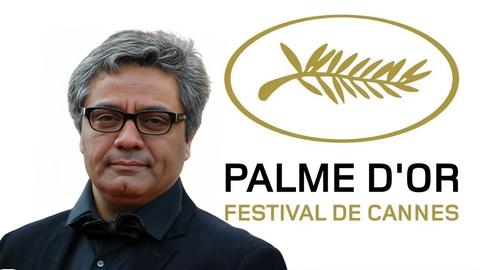Last week religious students from across Iran participated in a “turban placement ceremony” as part of their graduation at the Imam Khomeini seminary in Qom.
On the evening of May 5, Ayatollah Mesbah Yazdi, one of Iran’s most powerful and conservative clerics, and a close ally of Supreme Leader Ayatollah Ali Khamenei, officiated. He was joined by other notable conservatives including Sadegh Mahsouli, who served in various roles in the cabinet of former president Mahmoud Ahmadinejad, and Kazem Seddiqi, Tehran’s Friday Prayer leader.
Pictures first published by Iran’s semi-official Mehr News Agency showed an elaborate ceremony in which young clerics prepared and donned their religious garb.
The turbans of Shia clerics, which come in both black and white, are symbols of religious learning and recall Islam’s origins on the Arabian Peninsula in the 7th century.
“Wearing the Turban is a traditional custom, which was common in several cultures including the Arab culture,” says Ali Mamouri, a Baghdad-based religious affairs specialist who has taught in Iranian universities and seminaries, and writes regularly for Al-Monitor. “While the turban itself did not have religious value in the Arabic culture, all men used to wear it as a cultural custom.”
But in Iran today, turbans are an explicitly religious symbol. In the Shia tradition, Mamouri says, the turban took on special significance following the establishment of clerical institutes under the Safavid dynasty. The Safavids, who ruled Iran from 1501 to 1736, converted Iran from Sunni Islam to Shia Islam, and made Shia Islam Iran’s official religion, establishing an early form of theocracy.
The wearing of turbans ties Iran’s clerics to early Islamic history, and, in the case of black turbans, to the lineage of Islam’s prophet, Mohammad.
“In the Islamic era,” Mamouri says, “the color of a turban gradually found religious meaning. The black turban was used by the Abbasid dynasty, which was the third of the Islamic caliphates to succeed Muhammad, as a sign of belonging to the Banu Hashim, which was the prophet’s tribe.”
Clerics who wear black turbans are claiming to be Muhammad’s descendants.
White turbans, by contrast, are standard, since white was simply the most common color of turban worn by men on the Arabian Peninsula during Muhammad’s lifetime.
But despite the apparent formality of last week’s turban placement ceremony in Qom, there are no strict rules about their use by young clerics.
“Students of the religious seminaries can wear a turban any time during their study,” Mamouri says, “but they usually apply for it when they finish the first stage of study which is called Mugaddamat, or ‘preliminary.’ That usually takes about three to five years.”
It is not mandatory for religious students to wear a turban at all. In fact, Mamouri says, many seminary students prefer not to wear it because “it is not a very welcomed custom by the public.”
In Iran, jokes abound about taxi drivers refusing to pick up clerics, and secular Iranians often dismiss clerics as spongers who get paid for not working. A colloquial term for cleric, "akhound," has taken on pejorative connotations in recent years.
But clerics who do wear their turban in public often receive greater privileges, such as higher salaries and access to government jobs.
When seminary students apply for their turbans, they typically receive them from a religious authority known as a Source of Emulation, or “Marja Taqlid.”
Applicants register their names with the office of a religious authority, and will often receive the turban on a religious occasion like Eid al-Adha.
The ceremony in Qom last week marked Eid al-Mab'ath, or the anniversary of Muhammad’s prophecy on the Islamic calendar.
Tuban placement ceremonies typically take place in a holy shrine or at the offices of a religious authority.
Pre-wrapped turbans are placed next to the presiding authority, who places them, one by one, on the head of each applicant.
In Iran, Mamouri says, clerics’ turbans took on special significance under the secular military leader Reza Shah, who ruled Iran from 1925 to 1941.
Reza Shah imposed a secular dress code in Iran and banned the turban and other forms of religious garb for all but officially registered clerics.
The Pahlavi dynasty Reza Shah founded continued under his son Mohammad Reza Pahlavi, who Iran’s revolutionaries overthrew in 1979 in what they later called “the Islamic Revolution.”
visit the accountability section
In this section of Iran Wire, you can contact the officials and launch your campaign for various problems



























comments